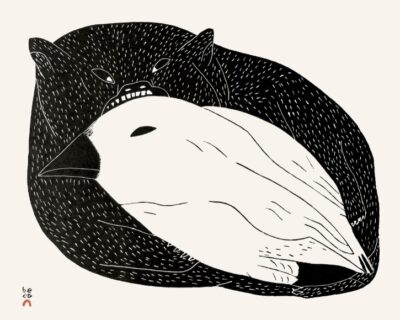- Posted on:
Shuvinai Ashoona at the Venice Biennale
It’s official. Shuvinai is not only a famous Inuit Artist, she is now recognized as a contemporary artist of international caliber, included among the most highly respected and recognized artists in the world. Only a few artists were chosen from North America, which makes her inclusion in this prestigious bi-annual exhibition all the more remarkable. Only a small percentage of artists in the world been chosen for this event throughout its history, and nearly all contemporary artists dream about achieving such recognition. Congratulations, Shuvinai! You earned it!

- Posted on:
Thirty NEW Original Drawings By Twenty Inuit Artists From Cape Dorset
I love Inuit Artist’s Prints, but Original Drawings by Inuit Artists are my favorite one-of-a-kind works of art. This is why it is so exciting that Dorset Fine Arts has provided thirty original drawings by twenty Inuit Artists, for sale on consignment, on a limited time basis. You can find them on each of the individual artists pages, or by checking the ‘Available Art’ section of Inuit Artists, which you can link to from the index bar. The newly added drawings can be found mixed through the first five pages. There’s even a few by Tim Pitsiulak, Shuvinai Ashoona, and Ooloosie Saila. And you’ll find original drawings by Kananginak, Aoudla Pudlat and Pudlo Pudlat, Padloo Samayualie, and many more. Here are a couple of my personal favorites, a wonderful drawing of Sedna by the late Pitaloosie Saila, and a bold raven transformation in flight drawing by Ningiukulu Tevee. But they’re all wonderful! Check ’em out! 🙂
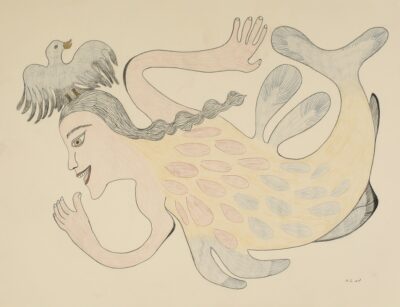
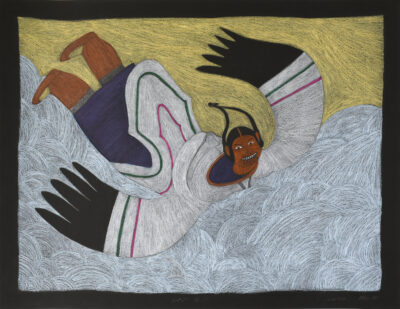
- Posted on:
A Brief History of Inuit Art
A Brief History of Inuit Art
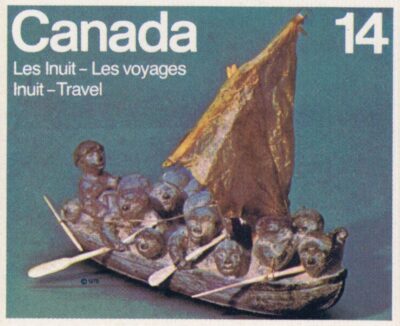
As with all forms of art, styles of Inuit Art and the artistic creations of Inuit Artists have changed through time. The history of Inuit Art goes back centuries, like the history of the Inuit People, who were the first to inhabit the arctic regions of North America. As with Native American Peoples, the Inuit were focused on survival and the works they created were for the gratification and enhancement of themselves and their communities. The objects they created from bones, stones, hides and other naturally available materials, were often utilitarian in nature and sometimes artistically decorated to show the wealth and power of the person owning/using the objects. In other cases, small easily portable carvings were created as talismans offering personal protection against all harm and evil which might otherwise befall the bearer. Many of these objects were related to their cultural and spiritual beliefs about creation and the world beyond the physical. Some objects were believed to give the bearer greater success in hunting, and more power over the elements and animals. Others were believed to appease and please the spirits and gods in ways that could then benefit those who carved and carried or wore the objects. The original creations of Indigenous peoples were never created to sell, nor for any purposes which existed outside the tribe or community for which they were made.
Of course, things began to change when foreigners from populated areas outside their territories began to invade. These foreign ‘visitors’ admired and coveted the artistic objects created by the Indigenous peoples they encountered, and therefore sought to acquire these objects through trade or purchase. For the most part, the Inuit did not want to give up their creations, but did want the objects or money offered for them. So they began to create art objects for the purpose of sale or trade to the outsiders. In this way the style and purpose of Inuit art creation changed over time, as the Inuit Artists began to create new, larger, and more elaborate forms of art to entice more buyers and traders with larger sums of money and goods in exchange for them.
However, it was not till the middle of the 20th century when Inuit Art creation for the sole purpose of sale to buyers and collectors around the world began in earnest, when James Houston, a young artist from Toronto, Ontario, brought a variety of Inuit Carvings he had purchased or traded for back to a Canadian Art audience, via the Canadian Handicrafts Guild in Montreal. The guild asked Houston to bring more Inuit Art Objects for show and sale, and soon the Government of Canada became involved as a way to help bolster economic self-sufficiency in Arctic Regions where the people often had a struggle to survive and thrive in their harsh environment. Soon Arctic Co-ops were born throughout all the Northern regions of Canada as a means for the Inuit People to support themselves by marketing their work to collectors.
In Cape Dorset, a new form of Inuit Art was born in the 50’s. Houston had moved to Cape Dorset in 1952, and one of the Inuit Artists he encountered there, Oshweetok Ipeelie, a skilled carver of walrus tusks, inquired about how the image on Houston’s cigarette package was created. This simple question led Houston to teach the Inuit Artists in that region how to create multiple printings of their artwork. This led to the formation of the Printmaking Studio at Kinngait, where new editions of Inuit Artists Original Works have been released to waiting Inuit Art collectors around the world every year since 1959.
It is also from the printmaking studios at Kinngait, Cape Dorset, that a wonderful new form of Original Inuit Art has evolved, in the form of drawings and paintings on paper. In order to develop their craft and create images to make into print editions, the Inuit Artists who were involved in the printmaking studios were asked to draw the images they would like to have printed. Originally the purpose of the drawings was for the best among them to become print editions. Over the years thousands of original drawings on paper were made collectively by the Inuit Artists involved. Some were chosen to become original prints, but most were not, and simply stored away. Over time some dealers and collectors became interested in the original drawings and they began to have shows of the original works on paper. This eventually led to drawing for the sake of drawing, and not just for the purpose of creating a print. In the last couple decades several Inuit Artists have risen to prominence and worldwide acclaim for their drawings alone, such as Tim Pitsiulak, Shuvinai Ashoona, and Ningiukulu Tevee. And in recent years a new generation of young Inuit Artists whose focus is on drawing have emerged as the bold new vanguard for Inuit Art. Newly emerged Inuit Artists such as Ooloosie Saila, Nicotye and Padloo Samayualie, Nujalia Quvianaqtuliaq, and Johnny Pootoogook are attracting the attention of art lovers and collectors around the world for their exceptional original works of art on paper.
Through the decades since these new forms of Inuit Art first began to emerge, original works of Inuit Art have become some of the most prized works of Indigenous Art in the world. In recent years many of the works of Inuit Artists have broken Secondary Art Market records for the highest selling works of Native Peoples Art to come to auction. A large stone sculpture by Joe Talirunili sold at auction for nearly half a million dollars. And in 2020 the record for an original print was broken when an early Kenojuak Ashevak print sold for over $200,000. Prices on all original works of Inuit Art by many outstanding Inuit Artists continue to break sales records, and will surely continue to prove good investments for collectors well into the future. But of course, the reason to collect Inuit Art, or any art, is not as an investment, but because you love it and can enjoy it every day as it graces the walls of your home, adding beauty, interest, and the spirit of the people who created it.
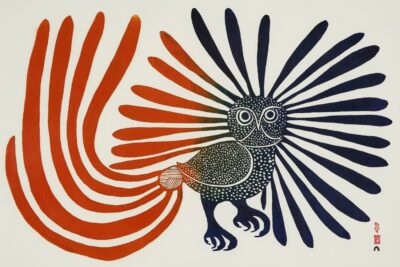
- Posted on:
Inuit Artists – Printmaking
Inuit Artists – Printmaking
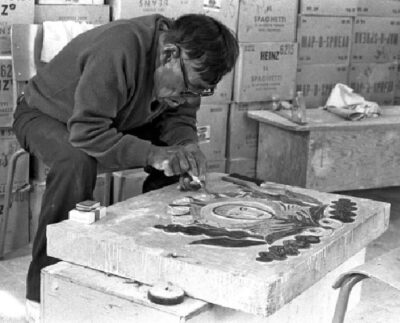
Inuit Artists create some of the most uniquely beautiful and intriguing works of art in the world, which are prized by collectors around the globe. Original works of Inuit Art come in a variety of forms, from original drawings and paintings on paper, to hand created original prints, as well as carvings in stone and bone. Inuit Artists focus is on graphic works, which include original handmade prints and drawings on paper.
Inuit prints are original works of art and are not reproductions. A stone lithograph and an offset lithograph are two completely different things. An offset lithograph is a machine made and printed reproduction of an original, usually mass produced in hundreds or thousands of copies. Most posters and prints are mass produced copies of the original work. Sometimes they are made in limited editions, but they are never considered ‘original’ prints, even if they are reproduced from an original work of art. However, handmade stone lithographs, stonecuts, etchings, aquatints, screen prints, and stencil prints, which are created by Inuit Artists, are each considered an original work of art, because each print is painstakingly created by hand, one print at a time, and each is therefore unique in itself.
The process of making an original print is very time consuming and requires a great deal of skill and knowledge to complete successfully. This is why artists often work directly with skilled printmakers who help them bring their images into fully realized original works of art on paper. This is also why most original prints are created in very limited editions. Since each print must be created individually, and each takes such meticulous preparation, care, skill, and time to create, it is rare for an original print to be made in an edition of more than fifty. And since each print is made individually by hand, each one will have it’s own unique properties and variations and will be slightly different from the others. This is why every handmade print is considered an original one-of-a-kind work of art, even though the same image is recreated multiple times for an edition. This is also why Original Inuit Prints are so highly prized and collected by art lovers around the world.
For more information on the printmaking process, please visit the Dorset Fine Arts website where they have several informative articles about the process of making Inuit Artists original prints:

- Posted on:
Remembering Three Fabulous Female Inuit Artists We Recently Lost
In the past 18 months, while the world has been preoccupied with Covid and other traumas, the Inuit Art World lost three wonderful female artists. Kakulu Saggiaktok left us in 2020, and this year we lost Pitaloosie Saila and Malaija Pootoogook. All these amazing Inuit women left behind an outstanding legacy of art for us to remember them by forever. But they will be sorely missed by their family and friends, and those of us who loved their beautiful art and wished to see much more of it created by them in the future.
Remembering Four Fabulous Female Inuit Artists
Pitaloosie Saila
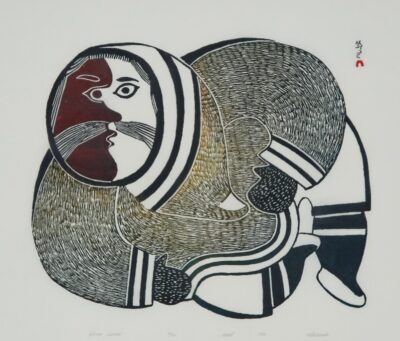
Kakulu Saggiaktok

Malaija Pootoogook
